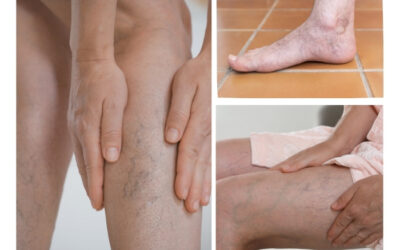Deep vein thrombosis (DVT) and blood clots are serious health conditions that require timely diagnosis and treatment. Left untreated, a clot can travel to the lungs, causing a potentially life-threatening pulmonary embolism. Early recognition, medical care, and preventive strategies are critical in protecting your health and ensuring long-term recovery.
This article will guide you through the causes, diagnosis, treatment options, and prevention methods for DVT—while also highlighting how to find the right local specialist near you.
Table of Contents
- Understanding DVT and Blood Clots
- How They Form and Who Is at Risk
- Diagnosis Process: What to Expect at the Clinic
- Treatment Options Available
- Lifestyle Tips for DVT Prevention
- Finding the Right Specialist Near You
- FAQs
- Final Thoughts
1. Understanding DVT and Blood Clots
DVT occurs when a blood clot forms in a deep vein, most commonly in the legs. These clots disrupt normal blood flow and can lead to swelling, pain, and warmth in the affected limb. While some clots remain localized, others can break loose and travel to the lungs, creating a medical emergency.
Blood clots are more than a circulation issue—they are a warning sign that your vascular system needs attention. Recognizing symptoms early gives you the best chance at fast and effective treatment.
2. How They Form and Who Is at Risk
Blood clots develop when blood thickens and clumps together instead of circulating smoothly, often as a result of injury, prolonged inactivity, or underlying medical conditions. Certain factors increase the likelihood of developing DVT, such as sitting for extended periods during travel or office work, having a family history of clotting disorders, or recovering from recent surgery or hospitalization. The use of hormonal birth control or hormone replacement therapy can also elevate risk, as can being overweight, obese, or a regular smoker. Understanding these risk factors is essential, as it empowers individuals to take preventive steps and seek medical attention promptly when symptoms appear.
3. Diagnosis Process: What to Expect at the Clinic
If you visit a clinic or urgent care center for suspected DVT, your provider will perform a series of diagnostic tests to confirm the presence of a clot.
Typical diagnostic steps include:
-
Physical examination – Checking for swelling, tenderness, and skin discoloration.
-
Ultrasound testing – A non-invasive imaging test to visualize blood flow and detect clots.
-
Blood tests (D-dimer test) – Measures clotting activity in the bloodstream.
Quick and accurate diagnosis ensures treatment can begin immediately, reducing the risk of complications.
4. Treatment Options Available
Treatment for DVT is carefully tailored to the severity of the clot and each patient’s overall health condition. Most individuals benefit from a combination of approaches that restore circulation, relieve symptoms, and prevent future clot formation. Medications such as anticoagulants are often prescribed to stop existing clots from growing and reduce the likelihood of new ones. In addition, compression therapy with specially designed stockings can improve blood flow in the legs and ease discomfort. For more severe cases, minimally invasive procedures like catheter-directed thrombolysis or clot removal may be recommended to quickly restore normal circulation. Beyond these medical interventions, lifestyle changes and consistent follow-up with a vascular specialist are critical for long-term vein health and prevention of recurrence.
5. Lifestyle Tips for DVT Prevention
Medical treatment is essential, but healthy lifestyle habits play an equally important role in reducing the risk of future clots. Staying active through regular walking, stretching, or low-impact exercise helps keep blood moving efficiently. A balanced diet that includes omega-3 fatty acids, fiber, and antioxidants supports vascular health, while limiting excess salt and processed foods can help reduce strain on the circulatory system. Proper hydration is another simple but powerful step, as it prevents the blood from thickening. For those who travel long distances, taking breaks to stretch and move around is vital to keeping circulation steady. Compression socks may also be beneficial, especially for individuals at higher risk or under medical advice. With these small but consistent adjustments, patients can significantly strengthen their defenses against DVT.
6. Finding the Right Specialist Near You
When searching for “DVT treatment near me” or “vascular specialist Houston,” choosing the right clinic makes a meaningful difference in care and outcomes. Look for facilities that are staffed with board-certified vascular specialists or cardiologists, and that provide access to advanced imaging as well as minimally invasive treatment options. Transparency regarding insurance coverage and payment options is also important, along with a patient-centered approach that includes ongoing follow-up support. At Premier Vein, our team offers comprehensive evaluation and tailored treatment plans, ensuring patients receive expert care close to home with the attention and support they need throughout recovery.
7. FAQs
- Which doctor treats DVT?
DVT is typically managed by vascular specialists, cardiologists, or hematologists, depending on your condition. - Can compression socks prevent DVT?
Yes, compression socks improve blood flow in the legs and are particularly useful during travel or recovery from surgery. - How long does it take to recover from a blood clot?
Recovery varies depending on clot size and location, but with treatment, many patients see improvement within weeks to months. Regular follow-up is essential.
8. Final Thoughts
Blood clots and DVT should never be ignored. Recognizing symptoms early and consulting a qualified vascular specialist can make the difference between a smooth recovery and life-threatening complications. Prevention through lifestyle adjustments is powerful, but professional diagnosis and treatment remain the cornerstone of safe care.
If you experience symptoms such as swelling, pain, or warmth in your leg, don’t delay. Contact Premier Vein today to schedule an appointment for personalized medical care and guidance.
Disclaimer
This article is for educational purposes only and should not be considered medical advice. Always consult a qualified healthcare provider for diagnosis and treatment tailored to your specific condition.


